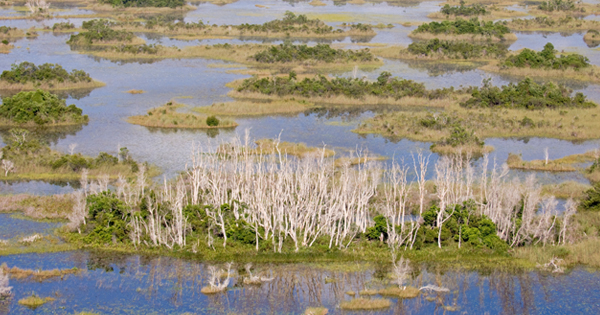
The effective control of invasive plants is an important part of the South Florida Water Management District’s (SFWMD) mission and our continued ability to protect the region’s natural resources.
DID YOU KNOW: The SFWMD has one of the nation’s largest invasive plant management programs and has become a national model for successfully dealing with non-native Melaleuca trees?
WHY IT MATTERS: Invasive plants are harmful to our ecosystems, resulting in loss of habitat, alteration of hydrology, changes in natural fire conditions and degradation of public use areas.
Melaleuca trees are one of South Florida’s most invasive species. Controlling this persistent species is critically important to the SFWMD’s strategic goals of advancing Everglades restoration and improving water quality. Projects such as the Picayune Strand Restoration Project and the Sam Jones - Abiaki Prairie Mitigation Project were initiated via removal of invasive plants.
LEADING THE CHARGE: Melaleuca was introduced to Florida over a century ago as an ornamental tree, but very quickly started transforming wetlands and displacing native cypress and sawgrass in the Everglades.
The SFWMD was instrumental in leading the charge to get Melaleuca federally listed as a noxious weed in 1992, a crucial step toward securing support from federal agencies, such as the U.S. Army Corps of Engineers and state agencies such as the Florida Fish and Wildlife Conservation Commission, to curb its spread.
AN INTEGRATED APPROACH: The SFWMD and its partners use a mix of approaches for Melaleuca control. This “integrated pest management” approach provides better results than any one method could achieve on its own. It can include the following methods:
- Preventative
- Chemical
- Mechanical
- Biological
- Physical
CONTINUED RESULTS: For over 30 years, the interagency melaleuca management program has systemically cleared invasive melaleuca from Lake Okeechobee and the Everglades, and land managers are able to maintain these areas with very low melaleuca presence year after year. These efforts include staff from the SFWMD, Florida Fish and Wildlife Conservation Commission, National Park Service, U.S. Department of Agriculture - Agricultural Research Service, U.S. Army Corps of Engineers and more.
The success of this program is largely attributed to sustained funding, close interagency coordination and a lot of dedication -- all of which contribute to the sharing of new information and technology, improved regional strategic planning, and increased public awareness to maintain and protect our public lands.
